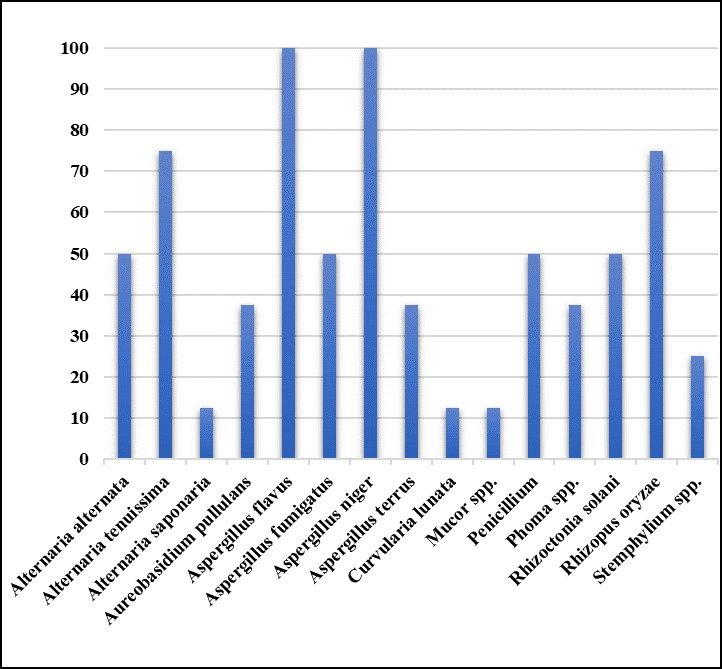Isolation and Identification of Wheat Seed Fungi and Effect of Microwave on Fungi Loads in Salah Al-Din Governorate in Iraq
Keywords:
Wheat, Seeds, Fungi, Microwave.Abstract
This study was conducted to determine the seed borne fungi of wheat cultivars in the seed production stores companies in Salah AL-Din Governorate, Iraq, 2021, and then evaluate the efficiency of Microwaves to kill or eliminate the fungal pathogens of wheat. The results of the study indicate that all samples of wheat seeds were contaminated with fungi in different percentage. 318 isolates of fungi were isolated from the studied wheat seed samples.They were identified culturally and microscopically according to approved taxonomic keys. The fungus A. flavus appeared with a percentage of 100 %, as it was present in all samples of the studied wheat seeds, as well as the species of A.niger. Then the species of Alternaria (A.alternata, A.tenuissima , A.saponaria) and the species of Aspergillus ( A.flavus , A.fumigatus, A.terrus, A.niger), Rhizopus oryzae, Rhizoctonia solani, Penicillium spp, Aureobasidium pullulans, Phoma spp, Curvularia lunata, Stemphylium spp, and Mucor spp appeared with different percentages. an investigation into the effect of microwaves on fungal pathogens of wheat varieties was undertaken .This was achived by microwaving seeds at 0 , 10 , 20 , 30 and 40 Seconds . Agar plate tests were used to ass’s pathogen loads. Pathogen levels were steadialy reduced at all treatment times and by 30 S treatment. All pathogens were consistently destroyed. In comparison, at 40 S the levels of saprophytic fungi were increased because it thermotolerant. The use of microwave radiation was a valuable tool for crop improvement, it was rapid, economic, efficient and safe to eradicating the pathogens.
Downloads

Published
How to Cite
Issue
Section
Copyright (c) 2023 Authors

This work is licensed under a Creative Commons Attribution-NonCommercial 4.0 International License.




